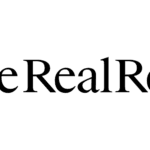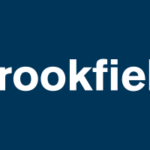V.F. Corporation (VFC) Stock Analysis
V.F. Corporation (NYSE: VFC) Stock Analysis
As of February 15, 2025
1. Company Overview
V.F. Corporation (VFC) is a leading global apparel and footwear company with a diverse portfolio of iconic brands. Founded in 1899, VFC has evolved into one of the world’s largest apparel conglomerates, designing, manufacturing, and marketing products that span outdoor, active, and workwear categories. Its brand roster includes The North Face, Vans, Timberland, and Dickies, among others, serving consumers across various geographies and lifestyle segments.
Key Business Segments
1. Outdoor & Action Sports
o The North Face, Vans, Timberland: Core lifestyle brands offering outdoor, streetwear, and adventure apparel/footwear.
o Global Presence: Retail and wholesale channels worldwide, driving brand recognition and customer loyalty.
2. Active & Workwear
o Dickies, Altra, etc.: Performance-based and utility-focused apparel for work and active pursuits.
o Product Diversity: Ranges from casual wear to industrial work clothing, catering to both professional and leisure markets.
3. Direct-to-Consumer (DTC) Channels
o Owned Stores & E-commerce: Emphasizes brand storytelling, higher margins, and direct consumer engagement.
o Omnichannel Strategies: Integration of digital platforms with physical retail to enhance customer experience.
4. International Operations
o Global Expansion: Strong presence in Asia-Pacific, Europe, and the Americas, balancing mature and emerging markets.
o Localized Strategies: Tailored marketing and product assortments to meet regional consumer preferences.
Strategic Initiatives
- Brand Portfolio Management: Continual evaluation of core and non-core brands, including divestitures and acquisitions, to optimize the portfolio.
- Direct-to-Consumer Growth: Investing in online platforms, owned retail, and data analytics to drive consumer engagement and margin expansion.
- Innovation & Sustainability: Focus on eco-friendly materials, circular design, and responsible manufacturing to align with consumer values and regulatory demands.
- Operational Efficiency: Ongoing supply chain improvements, cost controls, and inventory management to navigate shifting consumer demand.
2. Financial Performance
a. Revenue and Growth
- TTM Revenue (as of Dec 28, 2024): $10.15 Billion
- YoY Revenue Growth (TTM): -2.51%
Analysis
VFC’s revenue is just over $10 billion, reflecting a slight decline of approximately 2.5% from the previous year. The company has faced headwinds from macroeconomic uncertainties, changing consumer preferences, and increased competition. However, its diversified brand portfolio and geographic reach have historically helped mitigate significant volatility.
b. Profitability
- Net Income (TTM): -$457.24 Million
- EPS (TTM): -$1.18
- Profit Margin (TTM): -4.51%
- Return on Equity (ROE): -7.54%
- Return on Assets (ROA): 2.98%
- Return on Invested Capital (ROIC): 4.09%
Analysis
VFC is currently reporting negative net income, resulting in a loss per share of -$1.18 and a profit margin of -4.51%. This net loss may stem from restructuring charges, impairment costs, and challenging market conditions. The negative ROE highlights reduced shareholder returns, but the company still manages a modest ROA and ROIC, suggesting some operational efficiency across its core segments.
c. Margins
- Gross Margin (TTM): 52.64%
- Operating Margin (TTM): 5.44%
- Profit Margin (TTM): -4.51%
Analysis
Despite negative earnings, VFC’s gross margin remains healthy at over 50%, underscoring strong brand equity and pricing power. Operating margin is around 5.44%, dampened by elevated SG&A expenses, supply chain challenges, and restructuring efforts. Management’s ongoing focus on cost controls and brand rationalization could help margins recover over time.
d. Cash Flow
- Operating Cash Flow (TTM): $545.13 Million
- Capital Expenditures (TTM): -$95.58 Million
- Free Cash Flow (TTM): $449.55 Million
- FCF Per Share (TTM): $1.15
Analysis
VFC’s operating cash flow stands at $545 million, reflecting the company’s capacity to generate liquidity from its core operations. After accounting for capital expenditures, free cash flow is $449.55 million. Although net income is negative, the positive free cash flow underscores the brand power and recurring revenue streams that support near-term liquidity.
3. Balance Sheet
- Total Assets: $10.55 Billion
- Total Liabilities: $8.87 Billion
- Shareholders’ Equity: $1.68 Billion
- Total Debt: $5.75 Billion
- Cash & Equivalents: $1.37 Billion
- Net Cash (Debt): -$4.38 Billion
- Debt/Equity: 3.42
- Current Ratio: 1.56
- Quick Ratio: 0.84
- Working Capital: $1.79 Billion
Analysis
VFC’s balance sheet shows a high leverage ratio (Debt/Equity at 3.42), reflecting the company’s use of debt to fund acquisitions, dividends, or brand investments. Cash on hand is $1.37 billion, but net debt is still substantial at over $4 billion. The current ratio above 1.0 indicates enough short-term assets to cover near-term liabilities, although the quick ratio of 0.84 suggests reliance on inventory management to address short-term obligations.
4. Valuation
- Current Stock Price (as of Feb 14, 2025): $25.59
- Market Capitalization: $9.97 Billion
- PE (TTM): n/a (negative earnings)
- Forward PE: 25.57
- Price/Sales (TTM): 0.98
- Price/Book (TTM): 5.93
- P/FCF (TTM): 22.18
- PEG Ratio: 1.08
- EV/EBITDA (TTM): 17.21
- EV/Sales (TTM): 1.41
Analysis
VFC’s trailing PE is not applicable due to negative net income, but the forward PE around 25.6 implies that investors expect an earnings rebound. A Price/Sales ratio under 1.0 suggests a lower valuation relative to revenue, yet the P/FCF near 22 indicates the stock is not extremely cheap based on cash flow. Elevated debt levels also influence the EV-based multiples, with EV/EBITDA at about 17.
5. Market Performance
- 52-Week Range: $11.00 – $29.02
- 52-Week Price Change: +55.66%
- Beta (5Y): 1.48
Analysis
The share price has climbed roughly 56% over the past year, recovering from multi-year lows. A beta of 1.48 signals higher volatility than the broader market, reflecting investor sensitivity to changes in consumer sentiment and global apparel demand.
6. Financial Health and Risks
a. Liquidity & Leverage
- Current Ratio: 1.56
- Quick Ratio: 0.84
- Debt/Equity: 3.42
VFC’s moderate current ratio is counterbalanced by a relatively high debt-to-equity ratio. The company’s success in reducing leverage and managing interest expenses will be critical to improving financial flexibility.
b. Profitability & Cash Flow
- Net Loss (TTM): -$457.24 Million
- Free Cash Flow (TTM): $449.55 Million
Although net income is negative, VFC continues to generate positive free cash flow, offering a financial cushion for debt service, investments, and modest shareholder returns.
c. Operational & Market Risks
- Brand Competition: Major lifestyle and athletic brands face intense competition and evolving fashion trends.
- Retail Challenges: Store closures, changing consumer habits, and DTC expansion can disrupt distribution strategies.
- Global Economic Factors: Currency fluctuations, rising material costs, and geopolitical uncertainties may impact sales and margins.
d. Regulatory & External Risks
- Supply Chain Disruptions: Delays or higher costs in global sourcing and logistics can hinder timely product delivery.
- Sustainability & ESG Pressures: Growing consumer and regulatory demands for eco-friendly products can raise production costs.
7. Conclusion
Pros
1. Diverse Brand Portfolio: Popular labels like The North Face and Vans mitigate dependence on any single category.
2. Strong Free Cash Flow: $449.55 million FCF supports debt repayment, strategic investments, and dividends.
3. Recovery Potential: Ongoing restructuring and brand-focused strategies may restore profitability if consumer demand stabilizes.
4. Global Footprint: Balanced exposure to various markets, potentially buffering regional economic swings.
5. Dividend Policy: Annual dividend of $0.36 (1.41% yield) signals management’s commitment to returning capital to shareholders.
Cons
1. Negative Net Income: Losses weigh on earnings metrics, making valuation less straightforward.
2. High Leverage: Debt/Equity of 3.42 elevates financial risk and interest expenses.
3. Margin Pressure: Operating margin of 5.44% leaves limited room for missteps in a competitive environment.
4. Volatile Stock: A beta of 1.48 suggests amplified market sensitivity, with the share price reacting strongly to sector or macro changes.
5. Restructuring & Impairment Costs: Ongoing brand optimization and one-time charges have impacted recent financial results, though they may position the company for longer-term gains.
Final Note
V.F. Corporation remains a prominent player in the apparel and footwear sector, leveraging a broad brand lineup and extensive distribution channels. Despite facing negative earnings and substantial debt, the company’s stable free cash flow and well-known brand portfolio offer a foundation for recovery. Investors must balance near-term headwinds—such as restructuring costs, competitive pressures, and macro uncertainty—against the potential for operational turnaround and renewed growth in consumer demand.
Disclaimer
This analysis is for informational purposes only and does not constitute investment advice. Investing involves risks, including potential loss of principal. Past performance is not indicative of future results. Investors should conduct their own research or consult a qualified financial advisor before making any investment decisions.





